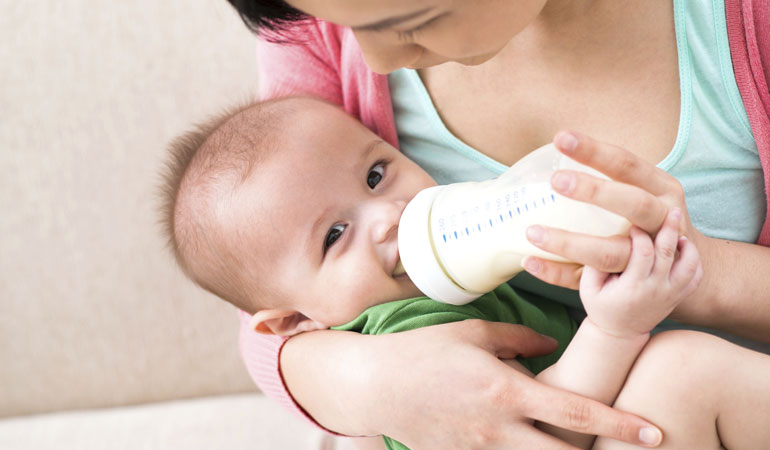Feeding a warm, sleepy baby in your arms is a pleasure that all parents adopting infants look forward to. But which bottle to use? Which type of nipple? Can a certain bottle really make a baby less fussy or be a better sleeper? What’s marketing hype, and what really matters?
Bottles
A walk down the bottle feeding aisle of any baby store brings a bewildering array of options. For most infants, nearly any bottle will work. All babies have gassy times, but, for those who are very fussy, it may help to minimize the amount of air they swallow. Most bottles that tout special venting systems do the job – though some consist of six or seven separate parts, which must be cleaned and reassembled after each use. Air intake can also be reduced by using a bottle that features a tilted shape or uses soft liners. Although they have an environmental downside, disposable drop-ins offer convenience, especially during your early days with a newborn, if you’re adopting in a different state.
Bisphenol A (BPA) is a chemical used to harden plastics, and it may be harmful to children’s developing hormonal systems. Avoid plastics with the recycling number “7,” or look for products labeled “BPA-free.” Glass bottles can replace plastics altogether, but they may pose safety dangers once baby is strong enough to grab the bottle herself.
Nipples
Nipples come in many forms, as well. Most healthy newborns can use any nipple, although you should begin with slower-flow nipples. These are designed to fit a newborn’s mouth and to accommodate his feeding pace. Use larger, medium-flow nipples when your baby is four to six months of age. Latex nipples are softer than silicone, but they may tear and need to be replaced more often over time. If you’re adopting an older infant, he may already be accustomed to one type of nipple and refuse others. If this is the case, use the kind of nipple that your child is used to.
Infants and toddlers with medical problems may have special feeding needs. Preemies and babies with small mouths require smaller (and softer) nipples. Babies who take thickened formula need nipples with cross-cut, larger openings to allow easier flow. Children with unrepaired cleft palates can’t generate suction in their mouths, and so they need an elongated, softer nipple to occlude the opening in the roof of the mouth. When feeding, the parent compresses the nipple, pushing formula into the baby’s mouth. Babies who have been fed by propped bottles, or those who have neurologic problems, may have difficulty coordinating the muscle movements to suck and swallow. They need softer, flatter orthodontic nipples. Babies with heart or breathing difficulties, who tire easily while feeding, will need softer, slower-flow nipples.
Consult your child’s pediatrician or an occupational therapist trained in feeding problems to learn more about your child’s feeding needs.
Beyond the Bottle
Cuddle your baby while bottle feeding, enjoying the eye and skin-to-skin contact. You want her to trust you to meet her needs. Most infants are ready to leave the bottle behind by about 12 months, although parents adopting older infants or toddlers can continue to use the bottle as a bonding tool — a child who is already using a sippy cup may still snuggle into a parent’s arms for a bottle.
While feeding choices can be daunting, it’s important to remember that the tone you set in feeding your child is far more important than the tools you use.



